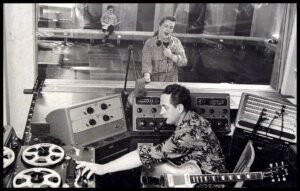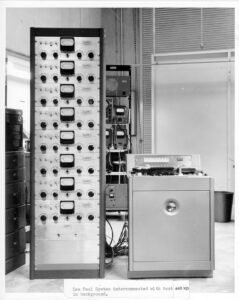Les Paul: The Guitarist Who Invented the Future
Lester William Polsfuss was not just a virtuoso musician. Nor was he merely a curious inventor. He was a turning point. His story bridges the jazz scene of the 1930s with the rock explosion of the 1960s, and the acoustic guitar with multitrack recording. While the world knows him as Les Paul, in luthiers’ workshops and recording studios, his legacy is summed up in one word: revolution.
The Log That Challenged Gibson

By the late 1930s, Les Paul was already a well-known jazz guitarist. But while playing with big bands, he realized his guitar lacked both volume and clarity. So he built a solid-body guitar from a simple block of pine and named it The Log.
Gibson rejected the design, calling it “a broomstick with pickups.” But history proved him right. Years later, with the pressure Fender created by launching the Telecaster, Gibson invited Les to collaborate on a new design. In 1952, the Gibson Les Paul was born: a solid-body electric guitar with refined aesthetics, long sustain, and a distinctive voice that would define rock music for decades.
Inventions That Changed History: Les Paul’s Technical Legacy
While he’s best known for his playing, Les Paul was above all an inventor. Many of his technical developments laid the groundwork for modern sound. Here are some of the most significant:

The Log
(1941)
Description: Solid pine body around 4 inches wide, with a bolt-on Epiphone neck.
Innovation: Removed the resonating body to reduce feedback and increase sustain.
Impact: One of the first functional solid-body electric guitar prototypes.
Tape Delay
(around 1948)
Device: Used separate record and playback heads on magnetic tape to create delay.
Application: Real-time echo effects in live performances with Mary Ford.
Legacy: Inspired future delay units, from the Roland Space Echo to modern plugins.
Multitrack Recording (patented in 1953)
System: Modified an Ampex tape recorder to enable recording on eight independent channels.
Technique: Overdubbing, allowing multiple layered tracks without loss of fidelity.
Influence: Revolutionized studio production and shaped the future of recorded music.
Les Paulverizer
(1956)
Concept: A “machine” that multiplied his guitar sound live.
Reality: A stage illusion that used pre-recorded tracks for live effects.
Curiosity: Foreshadowed live looping and performance-based layering.
Thinking Like Les Paul: Lutherie as a Laboratory
Les Paul’s story invites us to rethink the role of the modern luthier. He wasn’t a traditional craftsman—he didn’t carve tops or level frets. But he approached instruments as unfinished tools, always open to reinvention. And that mindset offers a powerful lesson to today’s builders.
Today, many luthiers blend traditional woodworking with electronics, 3D design, home recording, or even software development. Les Paul’s influence lives on not only in his signature model but in the very idea that an instrument is never just an object—it’s part of a broader sound system.
He never separated art from technique. That may be his greatest legacy. He didn’t just teach us how to make guitars—he taught us how to think about sound. That spirit—curious, hybrid, never fully satisfied—is what drives today’s most innovative luthiers.
You don’t have to replicate his inventions. You just have to replicate his attitude.







